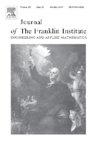基于多网络高光谱图像融合的兵马俑裂纹检测算法
IF 4.2
3区 计算机科学
Q2 AUTOMATION & CONTROL SYSTEMS
Journal of The Franklin Institute-engineering and Applied Mathematics
Pub Date : 2025-06-28
DOI:10.1016/j.jfranklin.2025.107860
引用次数: 0
摘要
兵马俑具有重要的历史研究价值。受环境和人为因素的影响,它们经常表现出不同程度的缺陷,裂缝是最常见的,漏检率很高,这导致修复过程中的疏忽。高光谱图像可以同时反映材料成分信息并穿透浅层表层,从而实现该层的裂纹检测。本文利用高光谱方法获取兵马俑信息,主要包括:1)构建兵马俑RGB和光谱数据库;2)模拟视觉感知,针对RGB光谱信息,提出了一种基于注意机制的视觉几何群(VGG)算法来定位裂缝区域;3)针对高光谱信息,提出了一种基于改进DeepLabv3+的浅层地表信息获取算法。将基于注意力机制的VGG算法与改进的DeepLabv3+算法融合,实现裂纹检测。为了验证该算法的有效性,研究人员使用高光谱数据构建了包含300组裂缝的数据集,考古学家使用视觉和反向确认方法对裂缝进行注释,作为基础事实。实验表明,该算法的平均像素精度(MPA)达到90.1%,比传统的Canny算法提高19.5%。这种方法可以帮助保护人员为兵马俑的保护和修复提供依据。本文章由计算机程序翻译,如有差异,请以英文原文为准。
Algorithm for crack detection of terracotta warriors based on fusion of multi-network hyperspectral images
Terracotta warriors possess significant historical research value. Affected by environmental and human factors, they often exhibit varying degrees of defects, with cracks being the most common and having a high rate of missed detection, which leads to oversight in restoration processes. Hyperspectral images can simultaneously reflect material composition information and penetrate the shallow surface layer, enabling crack detection in this layer. This used hyperspectral methods to obtain information on terracotta warriors as follows: 1) Constructed a RGB and spectral database of terracotta warriors; 2) Simulated visual perception, focused on RGB spectral information, proposed a Visual Geometry Group (VGG) algorithm based on attention mechanisms to locate regions of cracks; 3) Focused on hyperspectral information, proposed an algorithm based on improved DeepLabv3+ to acquire shallow surface information. And VGG algorithm based on attention mechanisms and the improved DeepLabv3+ algorithm were fused to achieve crack detection. To validate the effectiveness of the algorithm, the research constructed a dataset of 300 groups containing cracks using hyperspectral data, and archaeologists annotated the cracks using visual and reverse confirmation methods as the ground truth. Experiments show that Mean Pixel Accuracy (MPA) of the proposed algorithm reaches 90.1 %, which is 19.5 % higher than that of the traditional Canny algorithm. This approach can assist conservation personnel in providing a basis for the protection and restoration of terracotta warriors.
求助全文
通过发布文献求助,成功后即可免费获取论文全文。
去求助
来源期刊
CiteScore
7.30
自引率
14.60%
发文量
586
审稿时长
6.9 months
期刊介绍:
The Journal of The Franklin Institute has an established reputation for publishing high-quality papers in the field of engineering and applied mathematics. Its current focus is on control systems, complex networks and dynamic systems, signal processing and communications and their applications. All submitted papers are peer-reviewed. The Journal will publish original research papers and research review papers of substance. Papers and special focus issues are judged upon possible lasting value, which has been and continues to be the strength of the Journal of The Franklin Institute.

 求助内容:
求助内容: 应助结果提醒方式:
应助结果提醒方式:


